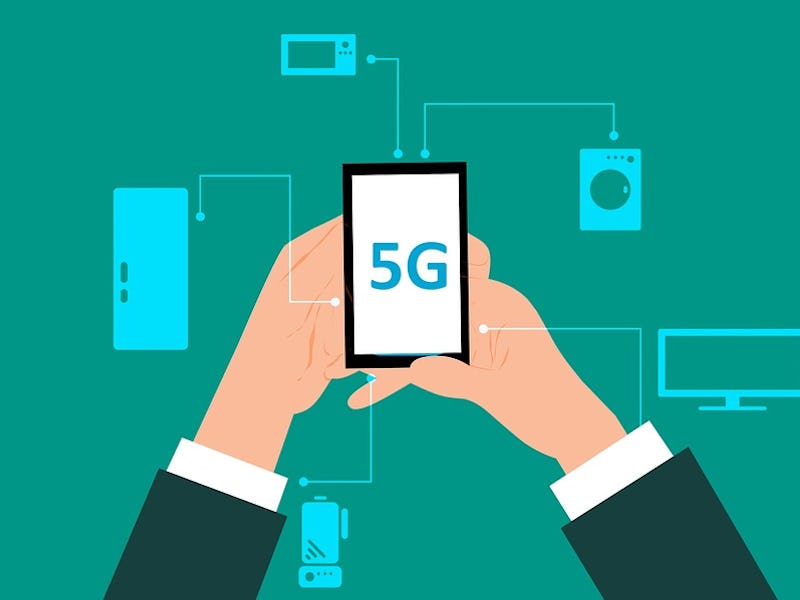This 5G Feature Will Revolutionize Connectivity and How Much We Pay for It
New rules on the information highway.

Internet service providers (ISPs) are sort of like a spouse you despise, but you can’t part ways with. Certain buildings or neighborhoods only have access to a singular service, leaving people with one option if they want access to high-speed internet. But the fifth generation of wireless connectivity, named 5G, stands to change all of that.
In an interview with Inverse, FCC Commissioner Brendan Carr proclaimed that the heralded upgrade to 4G LTE will not only deliver blistering browsing speeds that rival that of wired internet connection, but it will bring about a new era of ISP competition. This is all thanks to a bedrock technology of 5G, known as beamforming.
Diagram of how beamforming will shoot individual users their own stream of data.
Current cellular antennas that deliver 4G LTE to smartphones and tablets broadcast signals in all directions. This method works acceptably for now, but as an exponential number of devices come online these antennas need to blast out even more signals, which would make reception sluggish and increase the chance of interference. Beamforming streamlines all of it.
Think of it like a traffic light at an intersection guiding information to exactly where it needs to be. Instead of sending out information in every direction, 5G antennas would blast a particular user with their own stream of data. This is far more efficient, guards against criss-crossing signals, and can handle many times more devices that what is being done today.
How 4G antennas broadcast signals compared to how 5G antennas beam signals across a city.
So instead of having to rely on the sole ISP that grants you home wifi, you can hop on this information freeway to get everything you need in the palm of your hand. Much like Carr, Purdue University mobile network researcher, Chunyi Peng, tells Inverse this will rid the need for users to be wed to their service provider.
Millions of Americans ranging from city dwellers to those in the country side are stuck with their current ISPs or would be left without high-speed internet. Many of these companies also incrementally increase their rates over time, forcing customers to keep up with the bill. The beamforming technology underlying 5G might stand a chance to fight this and give consumers more options.
As it stands, Verizon will be the first service provider to roll out 5G this year in Los Angeles, Houston, Sacramento, and Indianapolis. This will be followed by Sprint in 2019, which has plans to retrofit Chicago, Dallas, Houston, Los Angeles, Atlanta, Washington, DC, New York City, Phoenix and Kansas City. Apartment buildings across the nations will likely see the benefit of this next-generation network from the get-go.
“One of the first places you’re likely to see this is in apartment complexes,” says Carr. “You may have a building that has an agreement such that there’s only one wired fiber provider available. Now, thanks to 5G antennas on the outside of the building, you can beam everyone living in that apartment another option for extremely fast fiber-like broadband.”
So if you’re over your current ISP, don’t worry, 5G’s beamforming tech might just give you the power you need to finally split up for faster and cheaper internet.
More from our interview with FCC Commissioner Brendan Carr: